Haunting image of a rare hyena lurking in a ghost town wins 2025 Wildlife Photographer of the Year award
South African photographer Wim van den Heever has received this year's Wildlife Photographer of the Year award for his image of a brown hyena outside a ruined diamond mining town.
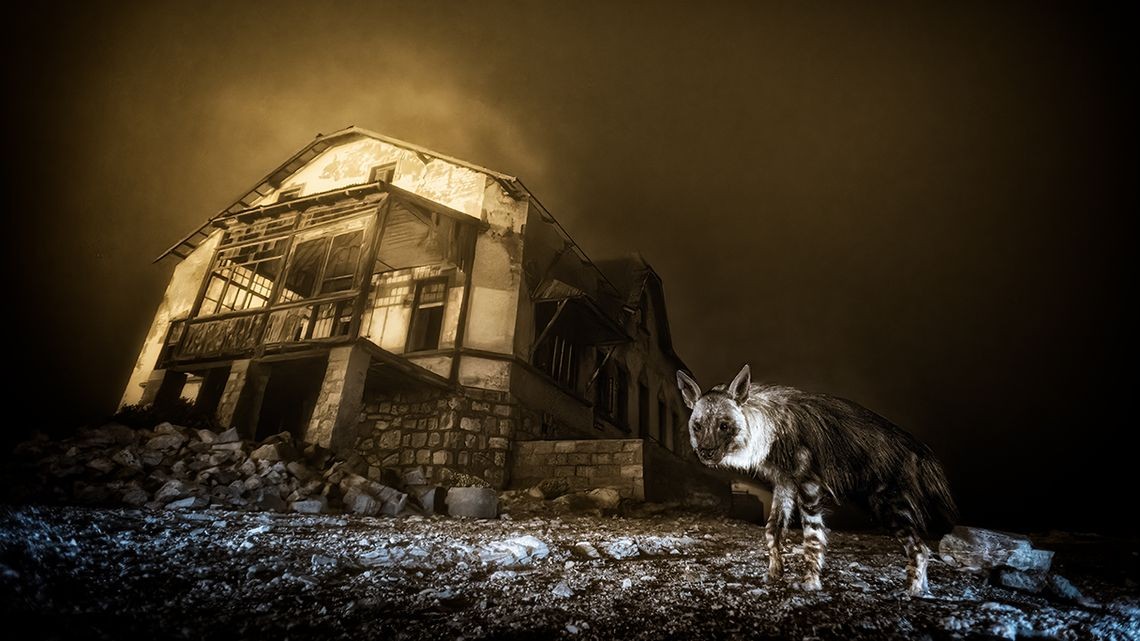
An eerie image of a brown hyena (Parahyaena brunnea) prowling the ruins of an abandoned diamond mining town in Namibia has won this year's Wildlife Photographer of the Year competition.
The haunting scene, titled 'Ghost Town Visitor,' shows the world's rarest hyena standing in front of a long-deserted building lit with an ethereal glow. To capture it, photographer Wim van den Heever set up camera traps in the ghost town of Kolmanskop after discovering hyena tracks there nearly a decade ago.
"I spent several seasons trying to photograph them at dawn and dusk from nearby buildings, but without success," van den Heever told Live Science in an email. "Eventually, I turned to camera traps, carefully positioning them where hyenas might pass. After nearly a decade of patience and persistence, I finally captured the image — a brown hyena wandering through the silent ruins."
Brown hyenas, also known as strandwolves, are identified by their shaggy brown coats, pointed ears and distinctive manes. Their global population is estimated to be as few as 4,000 individuals, which are primarily found in the arid regions of Namibia, Botswana and parts of South Africa.
Brown hyenas are known to pass through Kolmanskop while travelling to hunt for Cape fur seal pups or scavenge for carrion washed ashore along the Namib Desert coast, according to a statement released by the competition organizers.
"For years, I'd noticed brown hyena tracks and droppings in the ghost town of Kolmanskop near Lüderitz, and I knew they roamed its eerie, sand-filled streets," van den Heever said. "It became my dream to capture one moving through this haunting, abandoned place."
The photograph was also awarded first place in the Urban Wildlife category. "You get a prickly feeling just looking at this image and you know that you're in this hyena's realm, " Kathy Moran, Chair of the Wildlife Photographer of the Year Jury said in the statement. "I also love the twist on this interpretation of 'urban' — it was once but is no longer a human-dominated environment."
Get the world’s most fascinating discoveries delivered straight to your inbox.
Now in its 61st year, the competition, staged by the Natural History Museum in London, received its highest number of entries ever this year — a record-breaking total of 60,636 entries from 113 countries and territories. Here are some of our favorites.
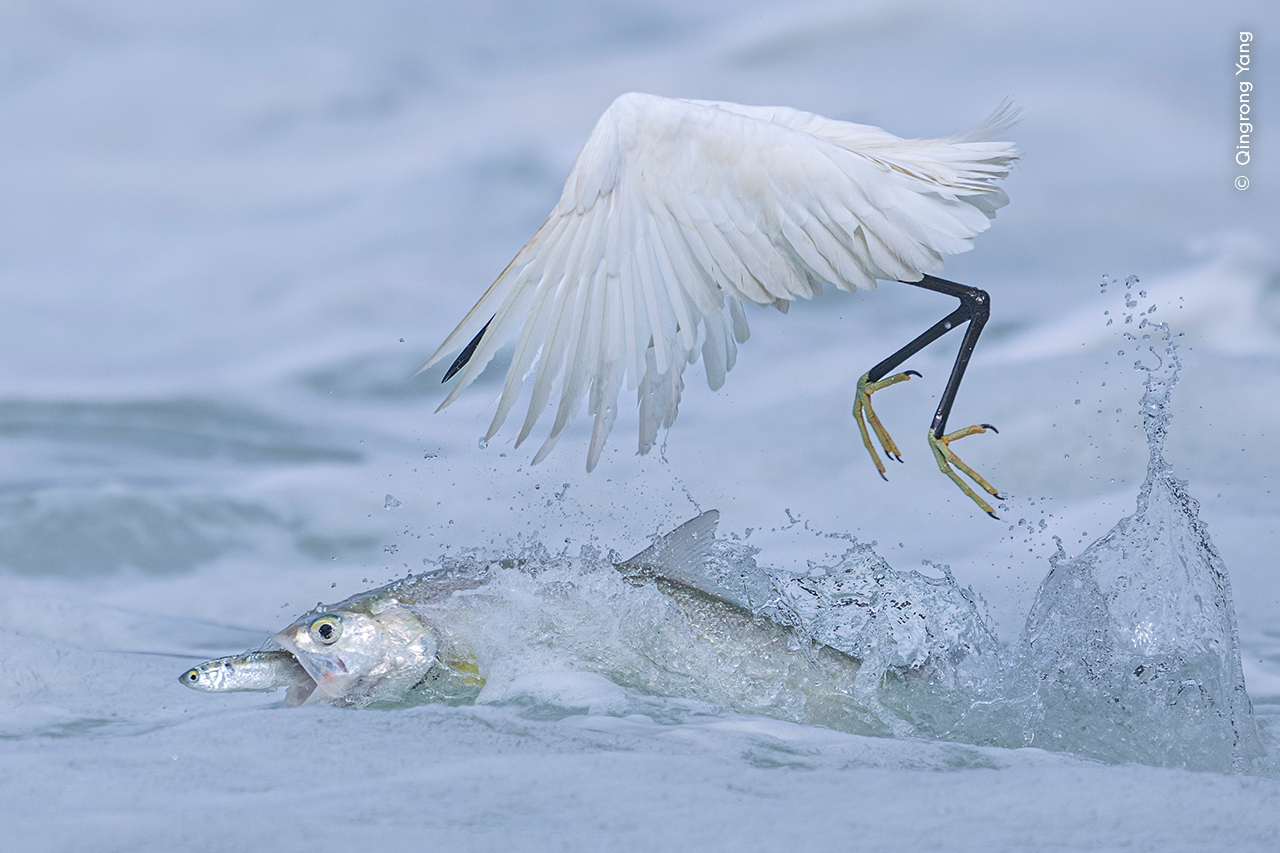
In a perfectly timed shot, photographer Qingrong Yang captured the moment a ladyfish (Elops saurus) snatched its prey beneath the swooping body of a little egret (Egretta garzetta) at Yundang Lake. Once a stagnant, polluted port in China, the lake has been transformed into a thriving ecosystem thanks to an engineering project reconnecting it to the sea. The stunning photograph took the top prize in the Birds category.
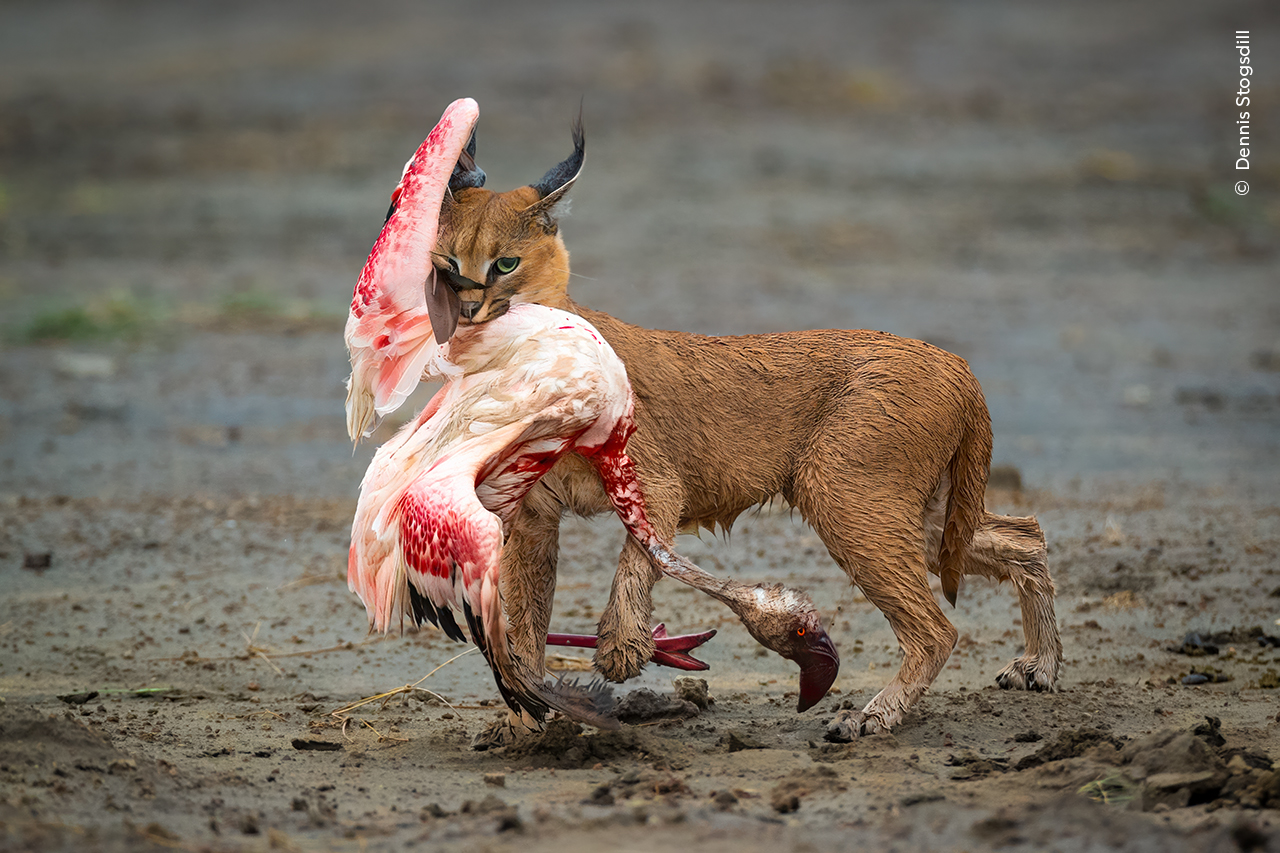
This captivating image of a lesser flamingo (Phoeniconaias minor) in the jaws of a predatory wildcat known as a caracal (Caracal caracal) at the Serengeti National Park in Tanzania, won the Mammal Behavior category.
"The story of this image is one of unplanned luck," photographer Dennis Stogsdill told Live Science in an email. "We had received a call of a serval [Leptailurus serval] near the lake and we rushed over to view only because a friend wanted to see one."
But when Stogsdill arrived at the scene, he was met by a caracal instead.
"Just moments later it began to stalk the flamingoes," he said. "So, while most wildlife photography involves immense patience and planning this was about as lucky as one can get."
Caracals are primarily nocturnal, meaning that seeing one hunting flamingoes in broad daylight is exceptionally rare — a behavior that has likely never been captured before, Stogsdill added.
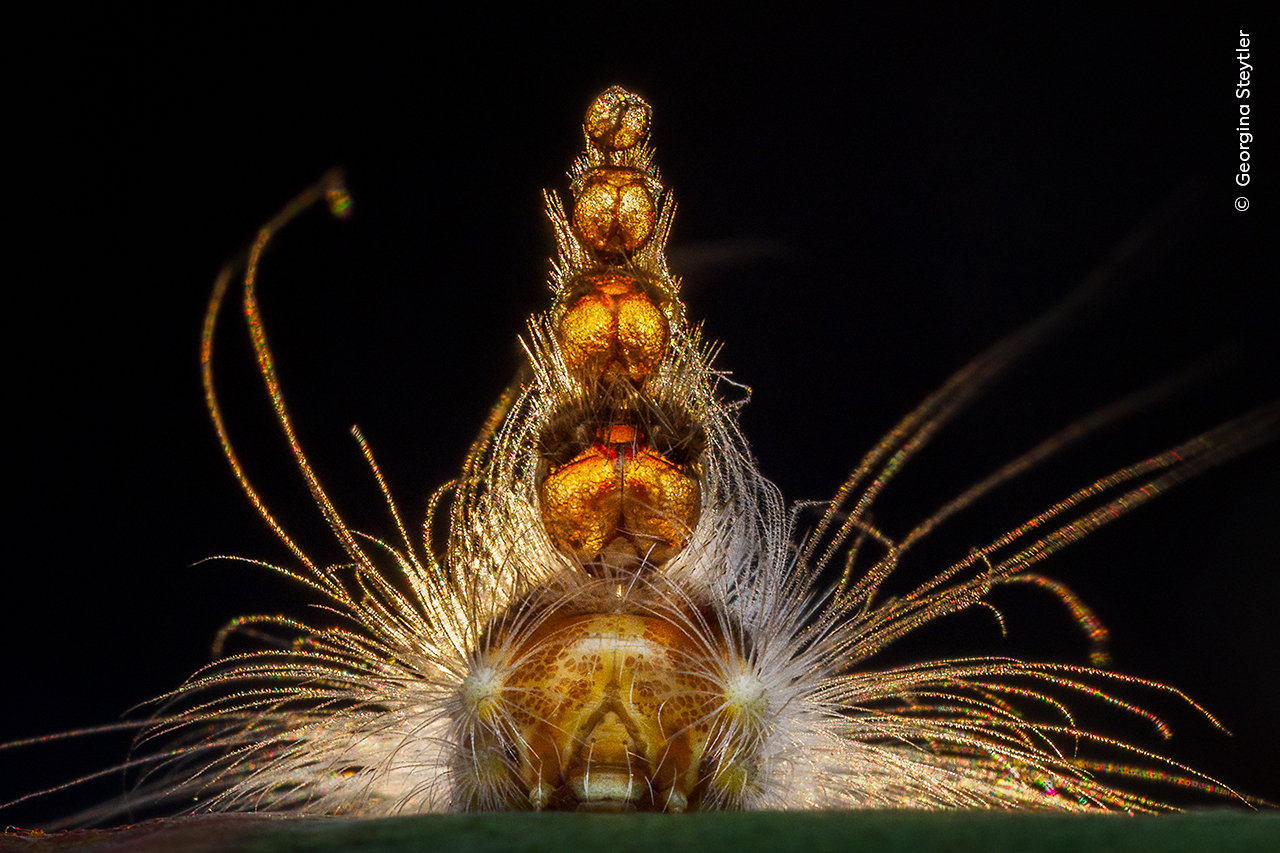
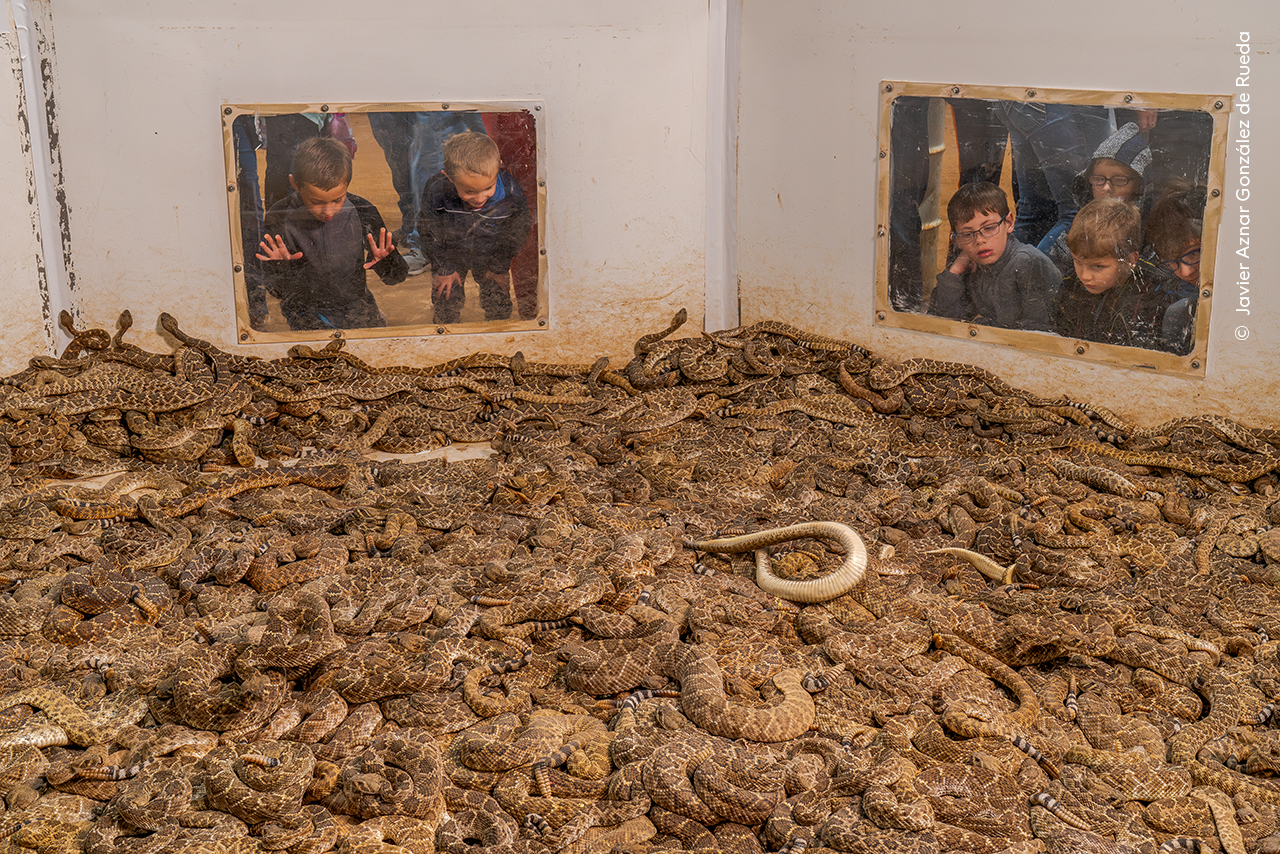
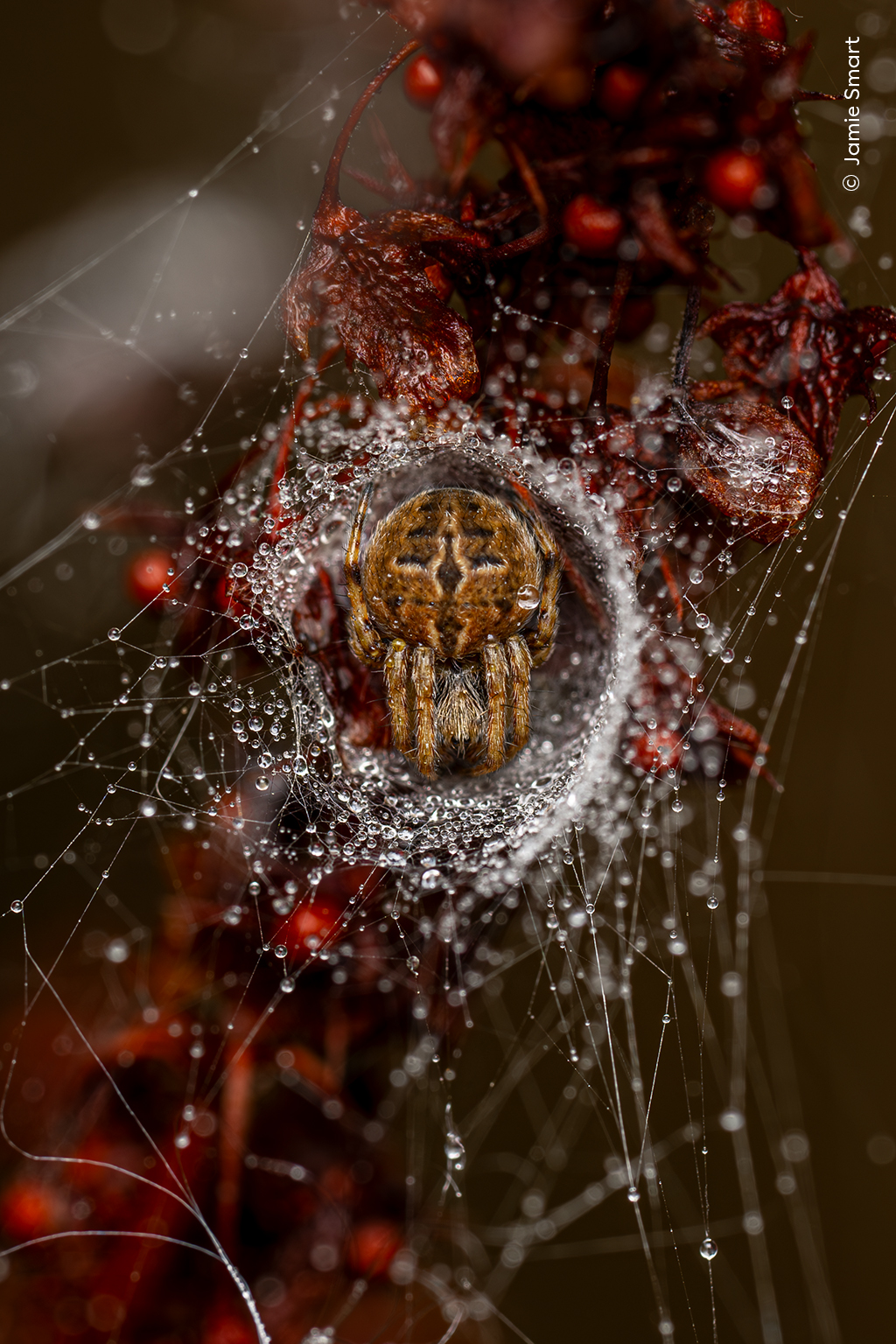
Other noteworthy images include a venomous gum-leaf skeletoniser caterpillar (Uraba lugens), nicknamed the "Mad Hatterpillar", sporting towering headgear; hundreds of western diamondback rattlesnakes (Crotalus atrox) piled in a pit for an annual rattlesnake round-up in Sweetwater, Texas;and an orb weaver spider (in the spider family Araneidae) in a dewy, silken lair.
Wildlife Photographer of the Year is developed and produced by the Natural History Museum, London.

Elise studied marine biology at the University of Portsmouth in the U.K. She has worked as a freelance journalist focusing on the aquatic realm.
You must confirm your public display name before commenting
Please logout and then login again, you will then be prompted to enter your display name.
